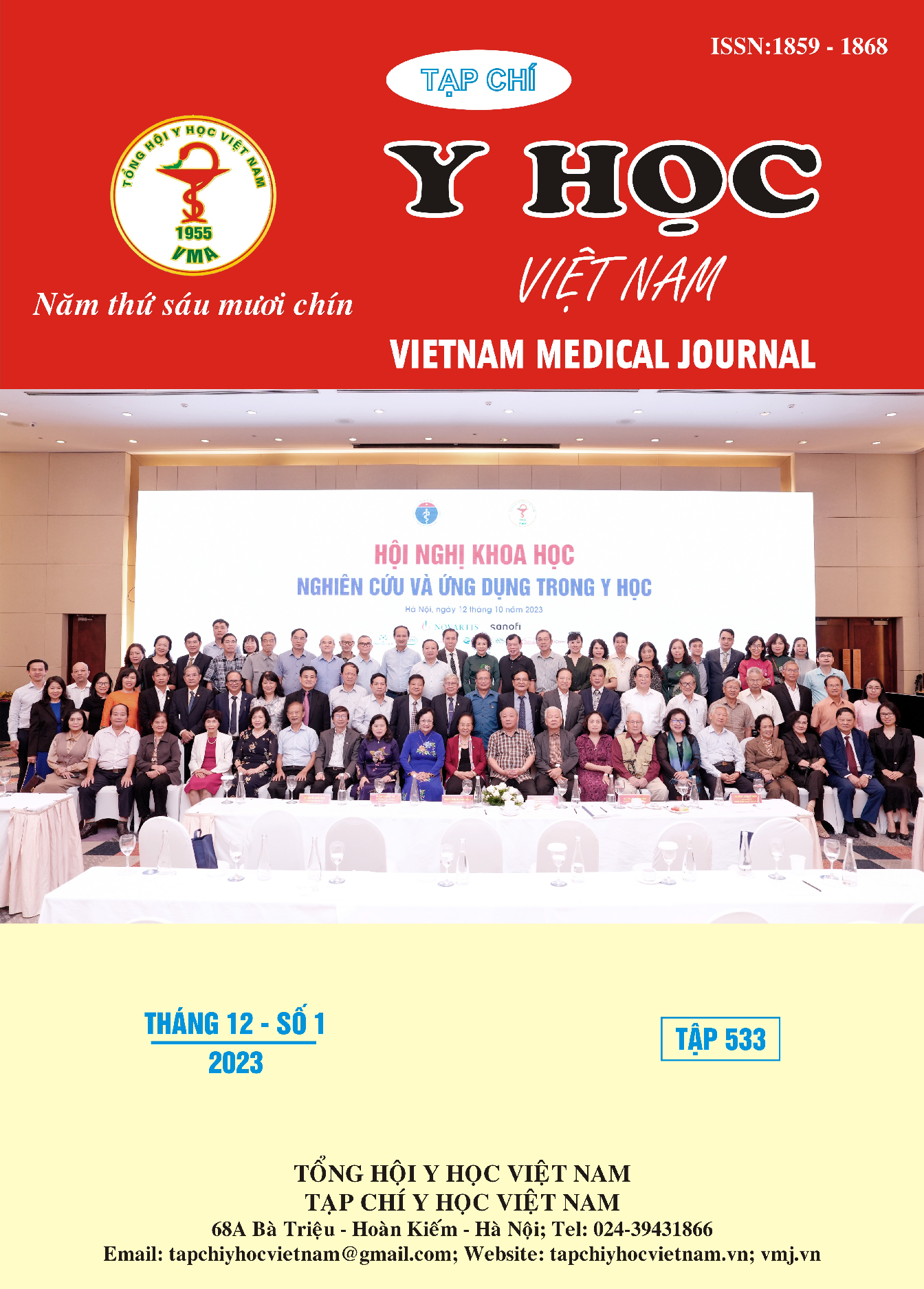DETERMINE THE CLINICAL, PARACLINICAL FEATURES AND EFECTS OF AUDITORY REHABILITATION IN CHILDREN AFTER OF COCHLEAR IMPLANTATION
Main Article Content
Abstract
Purpose: This study aimed to determine the clinical, paraclinical features and effects of auditory rehabilitation in the children after of cochlear implantation (CI). Study design: descriptive cases. Method: Determine the clinical, paraclinical features and effects of auditory rehabilitation in children according to free field measurement (FF) and the 6 sounds ling. Result: Thirty children with congenital hearing loss (16 boys and 14 girls) who received cochlear implants at the hospitals in Hanoi (November 2018-November 2022) were included in this study. Age at CI ranged from 12 to 58 months, most underwent CI at the age of 12 to 36 months (76,67%). There are 15 cases (50%) living in Hanoi, the rest are in provinces bordering Hanoi. The number of children implanted in one ear is 28/30 children (93.33%). The number of children receiving bilateral ear implants is 2/30 children (6.67%). Assessing hearing after surgery using free field (FF) testing, 20/30 cases (66.67%) had achieved hearing threshold results in the language area with the best result being 15 dB, the worst result being 30 dB. After turning on the device for 12 months, 30/30 children in both age groups (22 children in the age group younger than 3 years old and 8 children in the age group older than 3 years old) were able to detect 6 ling sounds at a distance from 2m to 5m. Conclusion: After one year of CI, the ability to discriminate 6 sounds lings was significantly improved, and hearing ability measured in free field measurement while wearing the device in all children tended to increase to near normal levels.
Article Details
References
2. WHO, M., , Global estimates on prevalence of hearing loss, WHO Geneva, 2012, pp.11-12.
3. Grosse S.D., Mason C.A., Gaffney M., Thomson V., White K.R., What contribution did economic evidence make to the adoption of universal newborn hearing screening policies in the United States, International Journal of Neonatal Screening, 2018, 4(3).
4. Miyamoto RT, Hay-McCutcheon MJ, Kirk KI, Houston DM, Bergeson-Dana T, Language skills of profoundly deaf children who received cochlear implants under 12 months of age: a preliminary study. Acta Otolaryngol. 2008, Apr;128(4):373-7.
5. Boerrigter M.S., et al., Cochlear Implants or Hearing Aids: Speech Perception, Language, and Executive Function Outcomes, Ear Hear, 2023, 44(2): 411-422.
6. S. J. Dettman, R. C. Dowell, D. Choo, W. Arnott, Y. Abrahams, A. Davis, D. Dornan, J. Leigh, G.Constantinescu, R. Cowan& R. J. Briggs, "Long-term Communication Outcomes for Children Receiving Cochlear Implants Younger Than 12 Months: A Multicenter Study", Otol Neurotol, 2016, 37(2):e82-95
7. Q. Guo, J. Lyu, Y. Kong, T. Xu, R. Dong, B. Qi, S. Wang& X. Chen, "The development of auditory performance and speech perception in CI children after long-period follow up", Am J Otolaryngol, 2020, 41(4):102466.
8. Bradley J, Beale T, Graham J, Bell M, Variable long-term outcomes from cochlear implantation in children with hypoplastic auditory nerves, Cochlear Implants Int, 2008 Mar;9(1):34-60.


